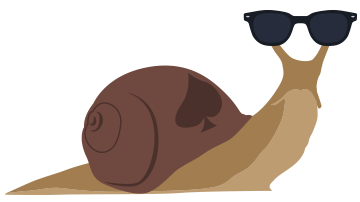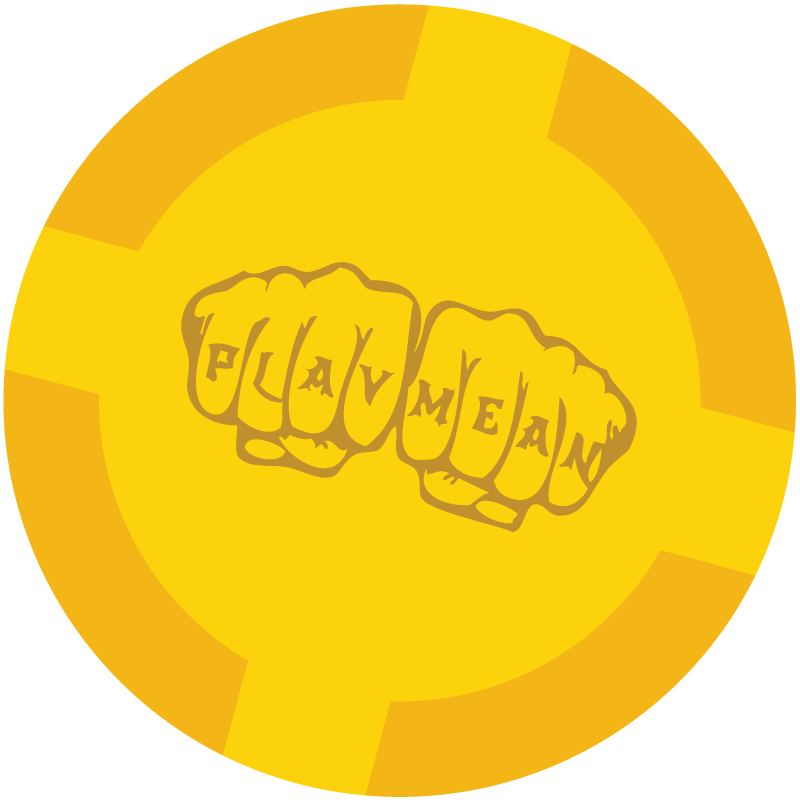Having a solid fundamental plan in some of the frequent spots is a must for any serious player. This article deals with turn probe bets (probes) and looks into some less often taken lines that we should consider implementing as a part of our standard gameplan. Folding too much and having no raising range are most common leaks players have in these spots.
Path to Efficiency
In order to develop

strong fundamentals as poker player it is necessary to have a good idea regarding the type of ranges we will play when facing common lines from our opponents. Naturally, knowing what we are doing vs the less common lines is certainly a plus, but having a
default gameplan for common spots is mandatory. In this article we will analyse our default gameplan when facing turn probe bets.
What is a turn probe bet?
The term “probe bet” originated with PT4 software and is their chosen name for a “bet-vs-missed-cbet-OOP”. It is not necessarily a commonly accepted term, (it's mainly PT4 users who will understand what we are talking about), yet it is nonetheless useful for describing a very common situation.
Seeing as we are referring to a bet-vs-missed-cbet OOP it means that the bet is occurring on the next street to the missed cbet. So as an example -
- BTN open-raises
- We call in BB, and check the flop
- BTN checks back IP, missing his cbet
- We lead the turn OOP (turn probe bet)
In many cases when our opponent decides to miss his cbet and check-back the flop, he is likely to have a capped range so probing the turn aggressively is often a very strong strategy. But what happens if we are the one facing a turn probe bet, how can we defend?
Common Issues Facing Turn Probe
The two most common issues players face when confronted with a turn probe -
- folding too much (especially by the river)
- having little to no raising range
This shouldn't necessarily surprise us. The reason is that our turn defense in this situation is often strongly linked to our play on the flop – in particular the type of hands we decide to check back with and miss our cbet. We've mentioned already that players who miss their cbet often end up having a
capped range. It's very common for players to cbet all of their strong hands so checking back range primarily ends up being:
- Mid-strength showdown stuff being checked back for pot-control
- Garbage with zero potential which is planning to fold the turn
It should be easy to see from this simplified breakdown of a flop check-back range why players fold-too much facing turn probes and have no raising range. Firstly they fold too much because their range consists entirely of mid-strength hands and weaker. Secondly they can't raise because it doesn't make sense with mid-strength hands, while the garbage does not have enough potential to be used as a bluff raise.
A decent proportion of players will not experiment with lines like this until they have specifically been told by someone that it is ok to do so.
It's not true to say the average player has zero raising range though. This is because from time to time, the mid-strength hands which are checked back improve dramatically on the turn card. Perhaps they check back an underpair and spike a set on the turn. Facing a turn probe in this situation they'd likely be raising.
Bluff range is often non-existent though in this spot. It simply doesn't occur to many players that this may potentially be a profitable bluffing situation. A decent proportion of players will not experiment with lines like this until they have specifically been told by someone that it is ok to do so. It's a mixture of this and the complete lack of decent bluffing hands that cause a zero bluffing frequency in this spot. As a result players will raise turn probes extremely infrequently and with an unbalanced range.
The Ideal Model
Seeing as we'd like a raising range facing a turn probe it's a good idea to think about ways to balance this. We'd obviously need to be capable of both value-raising and bluff-raising. With the common flop check-back model we actually have very limited capacity to do either. We need to make sure we actually reach the turn with a range that is capable of both value-raising and bluff-raising vs turn probes.
Protecting with Strong Hands
The first step is

to make sure that our flop check-back range is adequately protected so that we are not forced to fold too much vs turn probes. This shouldn't be too complex, we simply need to make sure that we are checking back some strong hands on the flop instead of cbetting. This is very easy to do on dry textures but may take conscious effort on drawy textures. It's slightly less important to check back strong hands on drawy
textures as we will see shortly.
On the turn our opponent will no longer be able to generate automatic profit with a turn probe. Assuming he probes the turn for about 2/3rds pot we should ideally not be folding too much more than about 40%, otherwise it starts becoming insanely profitable for him to bet any 2 cards. Not all of our hands will make good calls however, so it takes a lot of the pressure off if we allow ourself to have a raising range. We are now value-raising our flop
slowplays along with any mid-strength hands that drastically improve. What about bluffing?
Bluffing vs Turn Probes
We don't generally want to be bluffing without some potential on the turn. We at least need something like a
gutshot preferably. Many guys won't have draws in their range unless they turn them. Even then it's possible that players may cbet the majority of their backdoor draws on the flop, so it's rather unlikely that they can turn a backdoor draw after checking back. If we want some decent draws which we can use as turn bluff-raises we need to make sure we check back some on the flop.
We don't want to automatically cbet every single time we flop some kind of gutshot or backdoor flush. It makes sense to check back these hands with some frequency having the intention of using them as turn bluff-raises assuming the turn card is decent. If our opponent decides not to probe the turn with these hands then we likely have a profitable delayed cbet on the turn with our entire range.
Flatting Range
So we have a raising range both for bluffs and value. What does our
flatting range look like? Ultimately many of the concepts we've discussed so far apply from turn to river in a similar way as from flop to turn. If we were to raise all of our nutted hands on the turn facing a turn probe our river range would be capped on a blank turn card.
So firstly we should keep in mind that some of slowplaying range on the flop we should continue to slowplay on the turn in order to protect our river range. Predominantly our turn flatting range is going to be those mid-strength hands that we checked back on the flop for pot control. These will generally be considered bluff-catchers – the best of which we can call two streets with while the weaker bluff-catchers we can call turn and fold river facing a
double barrel.
We still have an issue with our range however since now it is extremely showdown oriented. Let's imagine that we call the turn probe with our slowplays and also our mid-strength hands. On the river our opponent checks. We likely want to be value-betting our slowplays and maybe even some of our better mid-strength hands if we feel they are strong enough vs our opponents river check.
If we design our flop ranges with the river play in mind, we should become more confident as the hand progresses while our opponents become less confident.
However we have already mentioned in this article the concept that if we are value-betting some hands we should also be bluffing with some hands. Which hands make sense as bluffs in this instance? We don't really have any decent bluffs in our range. We need to make sure that our turn flatting range vs probe bets incorporates this. Draws accomplish this task pretty reasonably – they are air type hands which are very good to bluff with assuming they miss on the river. So keep in mind that if we don't have any good river bluffs in this specific situation the problems may stretch as far back as the flop where we did not check back any draws or back-door draws.
One thing this discussion should teach us is that problems on one street may often simply be symptoms of a bigger problem on another street. Many players feel increasingly confused about their ranges the later the street they are on. If we design our flop ranges with the river play in mind, we should become more confident as the hand progresses while our opponents become less confident.
Dry vs Drawy Textures
We mentioned that checking back

strong hands is slightly less important on drawy textures. It is still a valid concept when designing a balanced strategy, so why can we say that it is less important?
If we imagine that we check back no strong hands on a K72r board – because the texture is dry there is a reasonable chance that the turn card is not going to improve us dramatically. Our range does not comprise of any draws and so we are nearly always going to have some type of air holding which we are folding or some type of mid-strength showdown hand which may struggle to stand up to aggression on turn and river.
On a drawy texture where we check back no strong hands, the effect is lessened. Even if our checking back range is purely mid-strength hands and draws, a decent chunk of our range will connect with the turn card. We are no longer capped and our opponent will not be able to barrel recklessly expecting automatic profit. So it's specifically on
blank turn cards that we are capped and vulnerable if we do not protect our checking-back range with some strong hands.
It's also the case on a blank turn that we are potentially less credible assuming that we go for a bluff-raise. Our opponent may wonder which strong made hands we checked-back the drawy flop texture with. This would decrease the expectation we have with our bluffs but would naturally increase the expectation we have with any legitimate hands we did decide to slowplay on a drawy texture.
So even though checking back a strong made hand on a drawy texture can be considered sub-optimal, we may be able to compensate for this on the turn card vs a non-believing opponent who assumes we never have value after we check back a drawy flop texture.
Our opponent may wonder which strong made hands we checked-back the drawy flop texture with. This would decrease the expectation we have with our bluffs but would naturally increase the expectation we have with any legitimate hands we did decide to slowplay on a drawy texture.
By default at the lower limits it's likely OK to cbet all strong hands and just accept that we will have to be overfolding on a blank turn after we check back. Hopefully our opponents do not exploit us for this at the lower limits, but it does not necessarily represent a balanced or complete
poker strategy.
Exploitative Decisions
The best decisions when facing turn probes will generally be exploitative ones. It's useful thinking about our default ranges for situations where we are playing against unknowns, but if we have some type of read or stat this should take precedent.
We should do our best to take advantage of the following stats, some of which many players do not include as standard additions on their
HUD.
- Probe Turn – How often our opponent will lead OOP on the turn after we miss our flop cbet. If we see that this stat is high (above 70%), we may find that the expectation of slowplaying hands on the flop is significantly increased.
- Fold Turn Probe to Raise – How often our opponent will fold when we raise his probe bet. If this value is very high (above 60%) we should weight our raising range towards bluffs. The higher this number gets the more comfortable we should feel bluff-raising total garbage vs our opponents turn probes.
- Fold river after bet/call turn – This is a more general stat but should give us some idea of how frequently to bluff river after opponent calls vs our turn bluff-raise.
The following may also be useful although apply to the reverse situation:
- Vs turn probe fold – How often our opponents will fold vs our turn probe bets. If this is above 60% we should be probing the turn recklessly.
- Vs turn probe raise – How often our opponents raise when we fire a probe bet on the turn. We can also use this stat to analyse our own game and see if we are raising enough on the turn. It's very common for players to raise here extremely rarely. Something around 10% is likely reasonable.
- Vs turn probe call – How often our opponents call when we fire a probe bet on the turn.
 to make sure that our flop check-back range is adequately protected so that we are not forced to fold too much vs turn probes. This shouldn't be too complex, we simply need to make sure that we are checking back some strong hands on the flop instead of cbetting. This is very easy to do on dry textures but may take conscious effort on drawy textures. It's slightly less important to check back strong hands on drawy textures as we will see shortly.
to make sure that our flop check-back range is adequately protected so that we are not forced to fold too much vs turn probes. This shouldn't be too complex, we simply need to make sure that we are checking back some strong hands on the flop instead of cbetting. This is very easy to do on dry textures but may take conscious effort on drawy textures. It's slightly less important to check back strong hands on drawy textures as we will see shortly.  strong hands is slightly less important on drawy textures. It is still a valid concept when designing a balanced strategy, so why can we say that it is less important?
strong hands is slightly less important on drawy textures. It is still a valid concept when designing a balanced strategy, so why can we say that it is less important?

